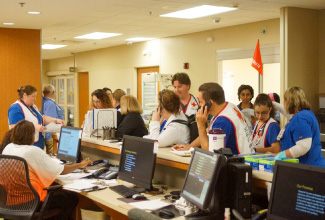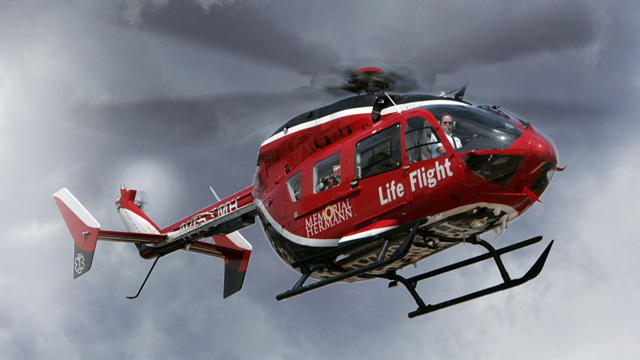
With each situation, the health care industry has been challenged to re-examine emergency management efforts to ensure that everyone, from the paramedics who are first on the scene to the surgeons in the operating room, are equipped and trained to respond to disaster the moment it strikes.
Memorial Hermann Health System has long been a leader in the health care industry in disaster preparedness. For years, a dedicated emergency management team has worked closely with hospitals across the system to complete annual drills to prepare staff for a mass influx of patients in compliance with federal rules requiring “patient surge” exercises.
This year, as Houston prepared to host millions of visitors for Super Bowl LI, the emergency management team intensified its efforts to ready Memorial Hermann facilities for the unthinkable.
“We knew that since Houston would be on the national stage during the Super Bowl, there was a heightened need for harnessing our energy to prepare our facilities for the various scenarios that could arise when large groups of people gather in one of the country’s largest cities,” said Robin Davis, Memorial Hermann Health System Emergency Manager. “Our aim was to test the process and the plans that we’ve implemented in recent years to gauge how prepared we are for these types of events.”
Over the past few months, 10 Emergency Centers across the System participated in standardized preparedness exercises comprised of two parts, a functional tabletop drill followed by a large-scale disaster exercise, replete with more than 350 volunteers pretending to be patients with realistic looking injuries, made-up patient histories and lab results. The exercises also included participation from first responders and even other hospitals across the Greater Houston region.
The exercises, dubbed “Operation Touchdown,” presented each hospital with different circumstances and stressors to examine specific areas of the facilities’ disaster response plans and strengthen the System’s overall ability to respond to any crisis, no matter the situation. In addition, the drills differed from anything Memorial Hermann has previously hosted because they incorporated various first responder agencies that share a close relationship with the System. The Houston Fire Department, the Montgomery County Hospital District, the Houston Airport System, the U.S. Federal Bureau of Investigations and the Atascocita Fire Department are just a few names included in the long list of agencies that participated.
“These paramedics and first responders work closely with our hospitals every single day and it was important for us to include them so that they could help practice along with us,” Davis said. “In a real-life scenario, patients aren’t going to just show up to the hospital by themselves. Paramedics and EMS agencies are critical components to getting patients safely from the scene into our facilities so we can continue providing the lifesaving treatment they need.”
While the 10 hospitals participating in the drills were each given a different hypothetical scenario, ranging from a bus crash on the interstate to an explosion at the airport, all faced the same challenge of having to create a Family Resource Center, a relatively new concept for hospitals.
“In a disaster scenario, we need to be able to quickly create a safe space where we can bring in family members who are looking for their loved ones,” said Amber Johnson, emergency management planner at Memorial Hermann. “We need to provide them with information that can help lessen the stress and burden on the Emergency Centers and other areas of the hospitals that can occur when family members are wandering around looking for patients.”
The drills provided valuable lessons for the System on best practices for creating Family Resource Centers that can be applied across the organization, Davis said.
“We received a lot of great feedback from the individuals who will be tasked with setting up those centers and they came up with some really innovative ideas nobody had thought of before, which will greatly help us create a robust plan for setting up Family Resource Centers.”
The emergency management team successfully noted areas for improvement and was pleased to see that time and time again, every hospital managed to provide excellent clinical care, despite the hectic circumstances.
“Across the entire chain, every group that interacted with the patients did an outstanding job of responding to the needs of the patient in front of them,” Davis said. “When it comes to patient care, our staff knows exactly what to do, no matter the situation.”
Red Duke Trauma Institute Newsletter Sign Up
Use the form below to sign up to receive our Red Duke Trauma Institute Newsletter with helpful articles about our services, case studies relevant to clinical protocols practiced on a daily basis, information about available educational opportunities and many other updates for health care professionals and first responders.
